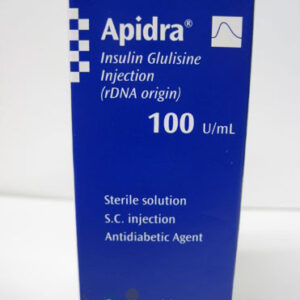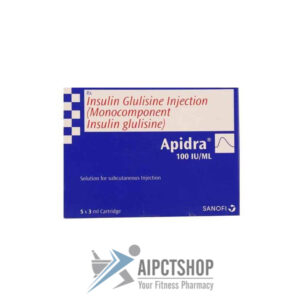Glimepiride and Metformin Information
What is the drug use for?
- It is used to treat type 2 diabetes mellitus when diet, physical exercise and weight reduction alone have not been able to control your blood sugar levels
Possible side effects
Glimepiride and Metformin?may cause side effects. Tell your doctor if any of these symptoms are severe or do not go away:
- Diarrhea
- Nausea
- Upset stomach
Some side effects can be serious. If you experience any of these symptoms, call your doctor immediately or get emergency medical treatment:
- Allergic reactions (including inflammation of blood vessels, often with skin rash) which may develop into serious reactions with difficulty in breathing, fall in blood pressure and sometimes progressing to shock
- Abnormal liver function including yellowing of the skin and eyes (jaundice), problems with the bile flow (cholestasis), inflammation of the liver (hepatitis) or liver failure
- Allergy (hypersensitivity) of the skin such as itching, rash, hives and increased sensitivity to sun
- Severe hypoglycaemia including loss of consciousness, seizures or coma
Medication Safety Issues
International issues:
Amaryl M may be confused with Amaryl brand name for glimepiride [multiple international markets], Amarel brand for glimepiride [France].
High alert medication:
The Institute for Safe Medication Practices (ISMP) includes glimepiride among its list of drugs which have a heightened risk of causing significant patient harm when used in error.
Geriatric Patients: High-Risk Medication:
Beers Criteria: Glimepiride is identified in the Beers Criteria as a potentially inappropriate medication to be avoided in patients ?65 years (independent of diagnosis or condition) due to higher risk of severe prolonged hypoglycemia in older adults (Beers Criteria [AGS 2019]).
Product Availability
Not available in the US
Storage and Stability
Store below 30?C (?86?F).
Adverse Reactions
Also see individual agents.
>10%: Endocrine & metabolic: Hypoglycemia (32% to 43%), hypoglycemia signs and symptoms (32% to 39%; severe hypoglycemia [night hypoglycemia events: 1% to 5%])
1% to 10%:
Gastrointestinal: Epigastric pain (2% to 4%), abdominal distress (1%), abnormal bowel sounds (1%), constipation (1%)
Hematologic & oncologic: Thrombocytopenia (1%)
Frequency not defined:
Endocrine & metabolic: Lactic acidosis
Hypersensitivity: Hypersensitivity reaction
<1%, postmarketing, and/or case reports: Abdominal distention, abdominal pain, benign prostatic hypertrophy, carcinoma (rectum), diarrhea, dizziness, dyspepsia, flushing, hyperkalemia, hypertension, lower extremity edema, nausea, pain, palpitations, swelling of extremities, vomiting








Reviews
There are no reviews yet